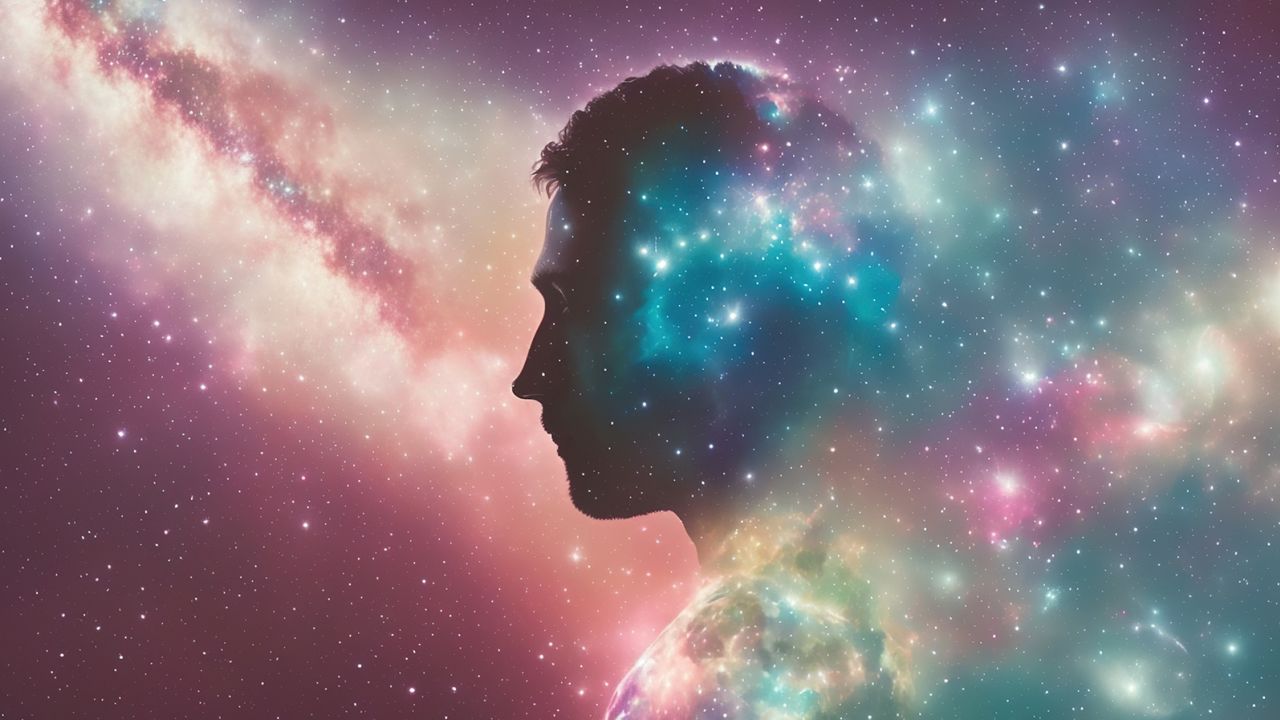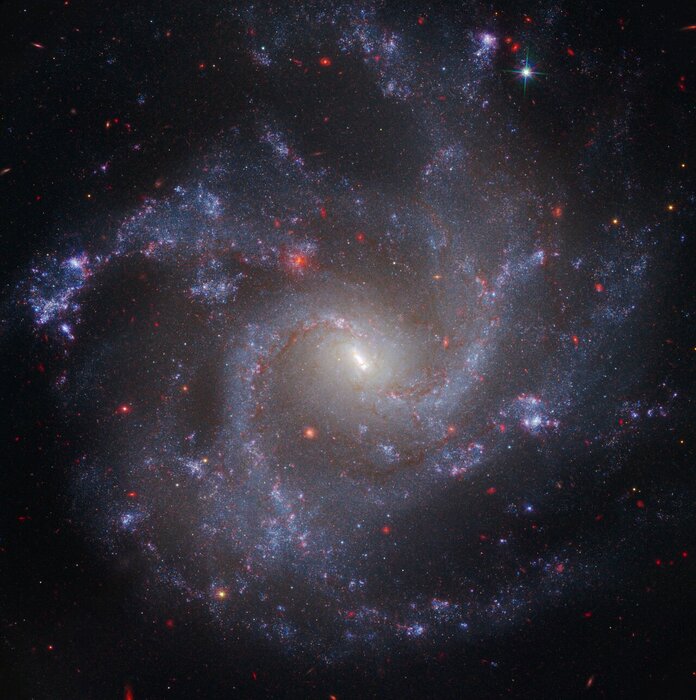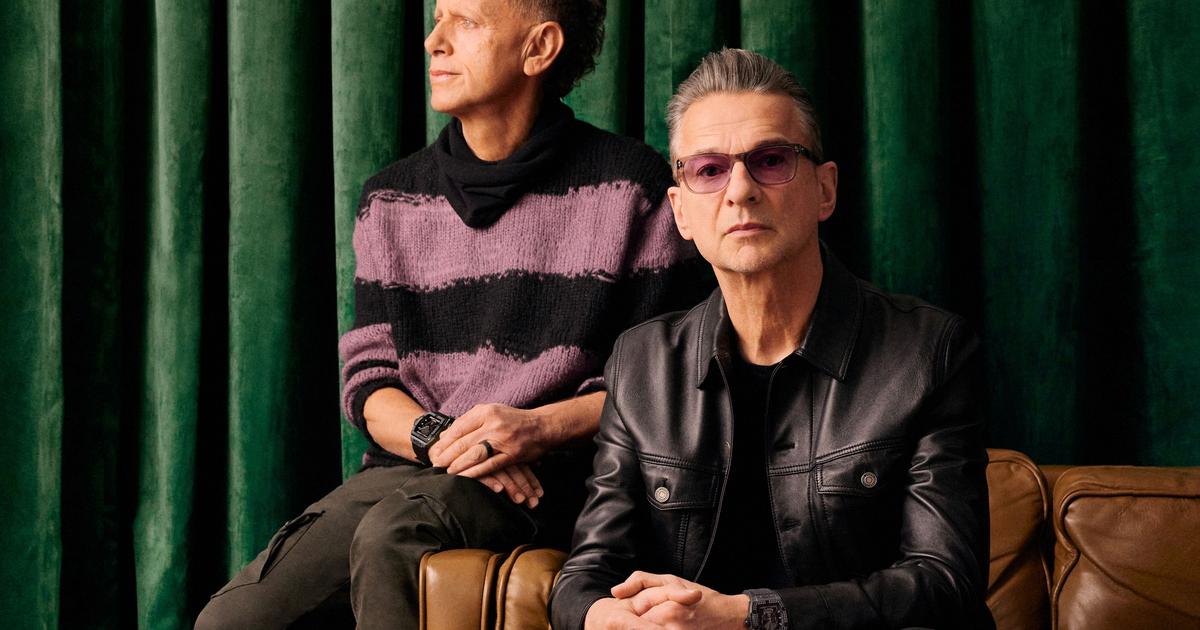They discover "hotbeds of life" thanks to the power of the Webb telescope 0:42
(CNN) --
In its violent early years, Earth was a molten inferno that ejected the Moon after a fiery collision with another protoplanet, scientists now suspect.
Later, it went from being a watery expanse to a gigantic snowball that nearly extinguished all existing life.
Later, hurricanes with waves up to 300 feet in height battered the newly thawed ocean.
But that's nothing compared to the chaos and celestial fireworks of the 9 billion years before our planet was born.
Science and history documentarian Dan Levitt's forthcoming book, "What's Gotten Into You: The Story of Your Body's Atoms, From the Big Bang Through Last Night's Dinner," conjures up a series of startling and often compelling images as it charts the path our lives take. cells, elements, atoms and subatomic particles travel to reach our brains, bones and bodies.
The book goes on sale on January 24.
Dan Levitt's book "What's Gotten Into You" reconstructs the journey of our atoms through billions of years.
"We now know that the origin of the universe, the formation of elements in stars, the creation of the solar system and Earth, and the early history of our planet were incredibly tumultuous," Levitt told CNN.
However, the explosions, collisions and almost incomprehensible temperatures were essential for life.
advertising
Author Levitt says he was drawn to the unsung heroes of science who never received due recognition.
A disturbance in Jupiter's orbit, for example, may have sent a shower of asteroids crashing down on Earth, seeding the planet with water in the process.
And the molten iron that makes up the Earth's core has created a magnetic field that shields us from cosmic rays.
"So many things happened that could have gone the other way," Levitt said, "in which case we wouldn't be here."
Reconstructing the epic step-by-step journey of our atoms over billions of years, he said, filled him with wonder and gratitude.
"Sometimes when I look at people I think, 'Wow, these are amazing organisms and all of our atoms share the same deep history going back to the
big bang
,'" he said.
He hopes readers will recognize "that even the simplest cell is incredibly complex and worthy of great respect. And so are all people."
Scientists discover "fountain of youth" in mice: they managed to reverse the aging process in laboratory studies
a stellar mystery
Our bodies contain some 60 elements, including the rush of hydrogen unleashed after the
big bang
and calcium forged by dying stars known as red giants.
As Levitt pieced together the evidence for how these elements and more complex organic molecules got to us, he weaved together the tumultuous history of the scientific process itself.
At first, he did not intend to draw a parallel between the turbulence of the universe and the changes in the scientific world, but the truth is that it was something natural.
"Since our great-grandparents were alive, many scientific certainties have been overturned," he says.
"That is part of the grace of the book."
When Levitt finished his first draft, he realized with surprise that some of the scientific confusion was due to various kinds of recurring biases.
"I wanted to get inside the heads of the scientists who made great discoveries: to see their breakthroughs as they did and understand how they were received at the time," he said.
"I was surprised that the initial reaction to revolutionary theories was almost always skepticism and rejection."
Throughout the book, he pointed out six recurring mind traps that have blinded even brilliant minds, such as the view that it's "too weird to be true" or that "if our current tools haven't detected it, it doesn't exist."
Albert Einstein initially hated the strange idea of an expanding universe, for example, and had to be persuaded over time by Georges Lemaître, a little-known but persistent Belgian priest and cosmologist.
Stanley Miller, the "father of prebiotic chemistry," who ingeniously simulated conditions on early Earth in glass vials, was a fierce opponent of the hypothesis that life could have evolved in the deep ocean, fueled by enzymes rich in overheated minerals and vents.
And so on.
"The history of science is littered with grand statements by aging statesmen about certainties that would soon be overturned," Levitt writes in his book.
Luckily for us, the history of science is also littered with radicals and freethinkers who delighted in tearing those claims to shreds.
constructive destruction
Levitt describes how many of the leaps forward were made by researchers who never received due recognition for their contributions.
"I'm drawn to unsung heroes with dramatic stories that people haven't heard before," he said.
"So he made me happy that many of the most compelling stories in the book turned out to be from people I hadn't heard of."
These are scientists like Austrian researcher Marietta Blau, who helped physicists see some of the first signs of subatomic particles;
the Dutch physician and philosopher Jan Ingenhousz, who discovered that leaves illuminated by the sun can create oxygen through photosynthesis;
and the chemist Rosalind Franklin, who was instrumental in discovering the three-dimensional structure of DNA.
The bright spark of new ideas usually jumps independently all over the world.
To his surprise, Levitt discovered that multiple scientists had come up with plausible hypotheses about how the building blocks of life might have started to come together.
"Our universe is teeming with organic molecules, many of which are precursors to the molecules we are made of," he explains.
"So I alternate between thinking that it's so unlikely that creatures like us exist and thinking that life must exist in many places in the universe."
However, nothing in our journey since the
big bang
has been smooth.
"If we try to imagine how life evolved from the first organic molecules, it must have been a bumpy process, full of twisting paths and failures," Levitt says.
"Most of them shouldn't have gone anywhere. But evolution has a way of creating winners from countless experiments over a long time."
Agriculture in space: scientists receive samples sent to the International Space Station
Nature also has a way of recycling the building blocks to create new life.
A nuclear physicist named Paul Aebersold discovered that "we change half our carbon atoms every one to two months, and we replace 98% of all our atoms every year," Levitt writes.
Like an ever-renewing house, we're always changing and replacing old parts with new ones: our water, proteins, and even cells, most of which we seemingly replace every decade.
Over time, our own cells will shut down, but their parts will reassemble into other forms of life.
"Even if we die, our atoms don't," Levitt writes.
"They spin through life, the soil, the oceans, and the sky in a chemical carousel."
In other words, like the death of the stars, our own destruction opens up another extraordinary world of possibilities.
Bryn Nelson is an award-winning science writer and author of the book "Flush: The Remarkable Science of an Unlikely Treasure." He lives in Seattle.
Human BodySpaceStars


/cloudfront-eu-central-1.images.arcpublishing.com/prisa/BI4VNORLKVHTLF4MEMPC3K27QE.jpg)






